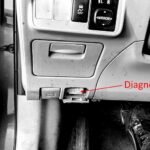OBD2 scanners are essential tools for diagnosing car problems, but they can sometimes malfunction. This guide explores common issues and provides solutions to help you fix your OBD2 scanner and get back to diagnosing your vehicle. Understanding the complexities of OBD2 systems and how scanners interact with them is crucial for effective troubleshooting.
Understanding OBD2 Scanner Complexity
Unlike basic code readers, professional-grade OBD2 scanners delve deeper into a vehicle’s systems. They communicate with various modules like airbags, TPMS, transmission, and more, each potentially using different protocols and baud rates. This complexity requires sophisticated software and up-to-date information. Simple scanners often rely on limited, static code databases, lacking the ability to handle the nuances of different car makes, models, and years. Advanced scanners require constant updates to keep up with evolving vehicle technology and proprietary communication protocols.
Common OBD2 Scanner Problems and Solutions
Several factors can cause OBD2 scanner issues. Let’s explore some common problems and how to fix them:
Connectivity Issues
- Problem: The scanner won’t connect to the vehicle’s OBD2 port.
- Solution:
- Check the OBD2 port for damage or obstructions.
- Ensure the vehicle’s ignition is turned on.
- Verify the scanner’s connector is properly seated in the port.
- Try the scanner on a different vehicle to rule out a car-specific problem.
Communication Errors
- Problem: The scanner connects but can’t communicate with the vehicle’s modules.
- Solution:
- Check for compatibility between the scanner and the vehicle’s make, model, and year.
- Update the scanner’s firmware to the latest version. Some scanners require internet connectivity for updates. This ensures compatibility with newer vehicle protocols.
- Consult the scanner’s manual for specific troubleshooting steps related to communication errors. Often, manufacturers provide detailed guides for resolving these issues.
Data Errors or Inaccurate Readings
- Problem: The scanner displays incorrect codes or data.
- Solution:
- Ensure the scanner is properly configured for the specific vehicle being diagnosed.
- Clear any stored trouble codes and rescan. Sometimes old codes can interfere with accurate readings.
- Check for any pending updates or known issues with the specific scanner model. Online forums and manufacturer websites can be valuable resources.
App or Software Issues (For Bluetooth Scanners)
- Problem: The scanner app crashes or doesn’t display data correctly.
- Solution:
- Restart the app and try again.
- Ensure your phone or tablet’s Bluetooth is enabled and properly paired with the scanner.
- Check for app updates. Developers frequently release updates to improve performance and fix bugs.
- Reinstall the app. Sometimes a fresh installation can resolve persistent software issues.
Understanding the Importance of Updates and Offline Functionality
Modern OBD2 scanners often require internet connectivity for initial setup, updates, and access to extensive code databases. While this ensures accurate and comprehensive diagnostics, offline functionality can be crucial in situations without internet access. Some advanced scanners offer limited offline modes after initial setup and download of necessary data.
Choosing the Right OBD2 Scanner
Selecting the right OBD2 scanner depends on your needs and budget. Basic code readers are sufficient for checking engine codes, while professional-grade scanners offer more advanced features like live data streaming, bi-directional control, and access to manufacturer-specific codes. Consider factors such as vehicle compatibility, update frequency, and user interface when making your choice.
Conclusion
Troubleshooting an OBD2 scanner involves understanding its complexities and following a systematic approach to identify and resolve issues. By checking connections, ensuring compatibility, updating firmware and software, and consulting resources, you can effectively fix common problems and get your scanner working properly. Choose the right scanner for your needs and keep it updated to ensure accurate and reliable vehicle diagnostics.

